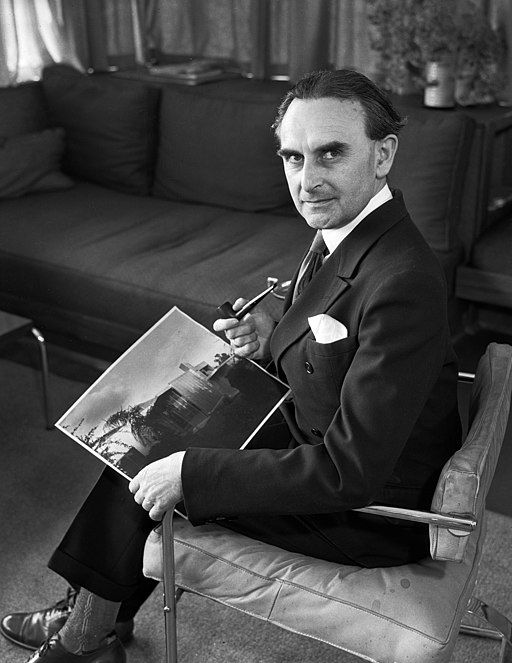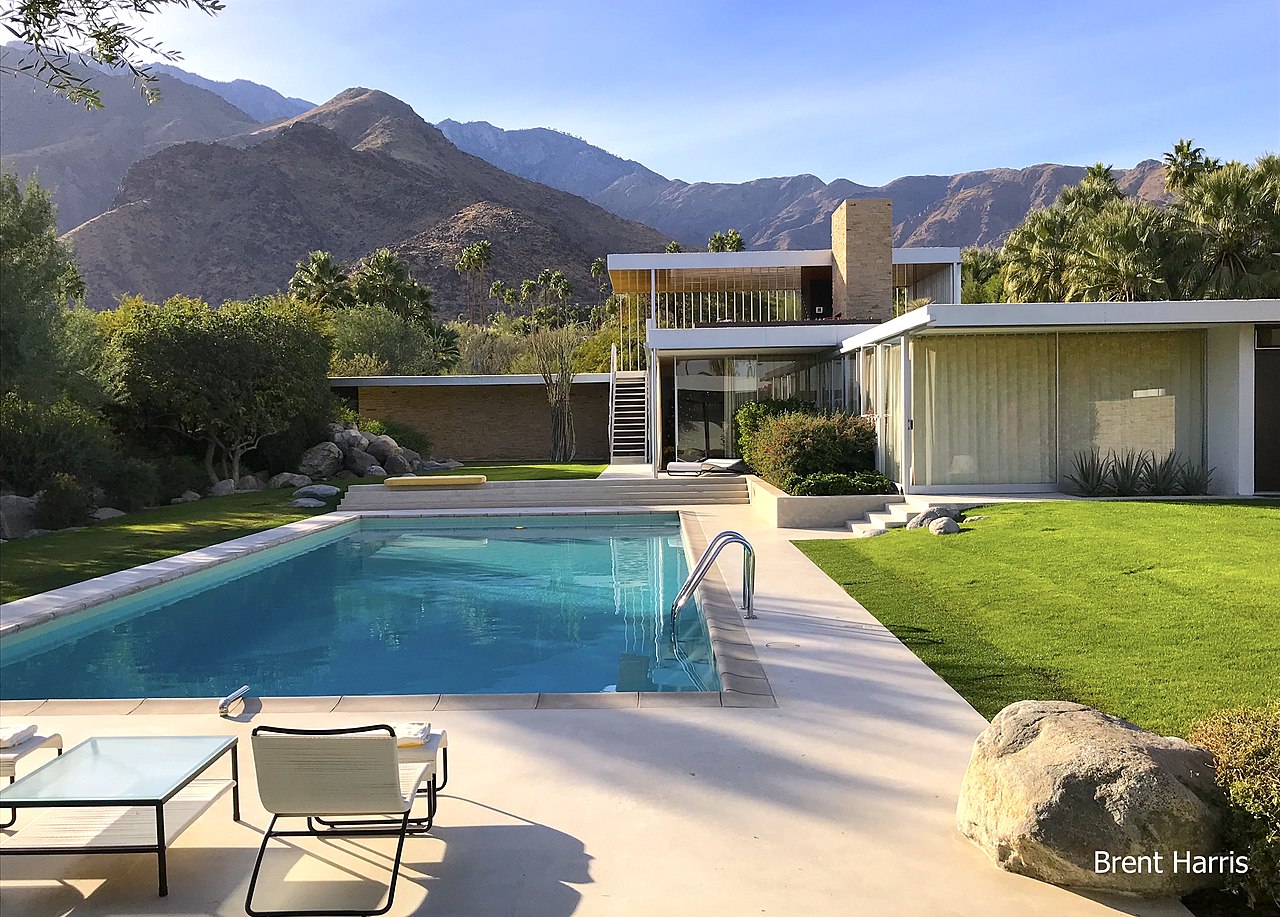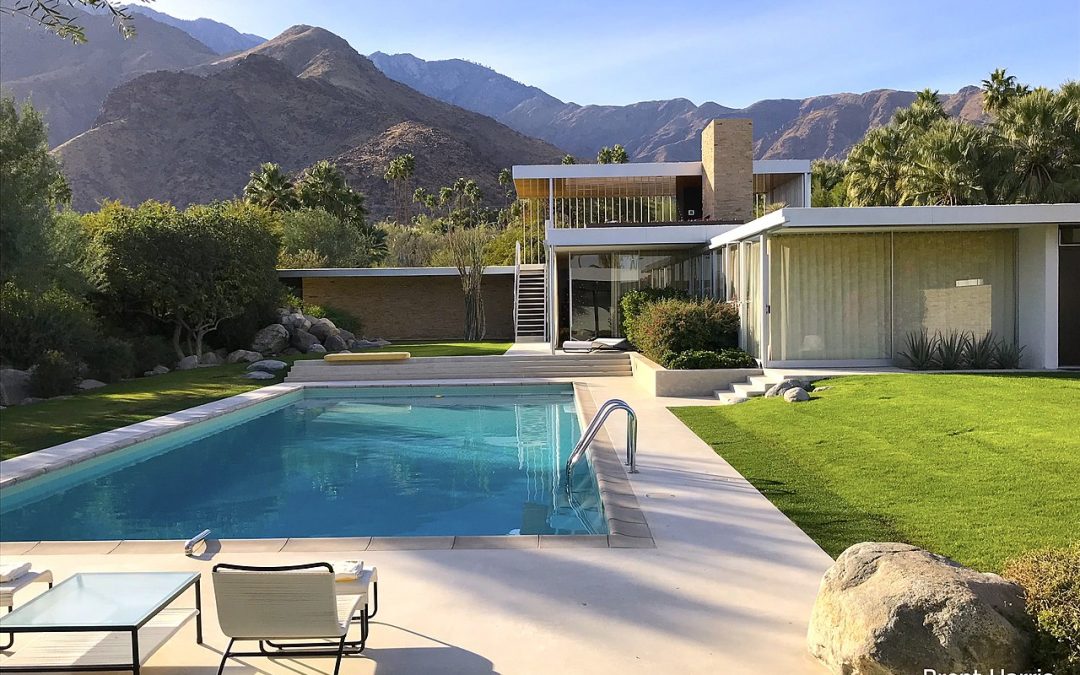
Richard Neutra (Source: Wikimedia)
Richard Neutra, a renowned modernist architect, was one of the most influential designers of the mid-century period. Born in Vienna, Austria in 1892, Neutra moved to the United States in 1923 and began his architectural career working for Frank Lloyd Wright. In 1929, he established his own architectural firm in Los Angeles, California, and went on to design over 300 buildings, including homes, office buildings, and public buildings.
Neutra’s philosophy of design centered around the idea of creating structures that were in harmony with their natural surroundings. He believed that the built environment should be an extension of the natural environment and that architecture should strive to enhance, not dominate, its surroundings. His designs often incorporated large windows, open spaces, and outdoor living areas to create a seamless connection between the interior and exterior of a building.
One of Neutra’s most famous works is the Kaufmann House, which he designed in 1946 for Edgar J. Kaufmann Sr., the same client who commissioned Frank Lloyd Wright’s Fallingwater. The Kaufmann House, located in Palm Springs, California, is a perfect example of Neutra’s philosophy of design. The house is built to be in harmony with the surrounding desert landscape and features large windows and an open floor plan that allows the outdoors to become an integral part of the interior living space. The Kaufmann House is now considered a masterpiece of mid-century modern architecture and is listed on the National Register of Historic Places.

Kaufman Desert Home (Source: Wikimedia)
Another of Neutra’s notable works is the Lovell Health House, which he designed in 1929 for Los Angeles physician Philip Lovell. The Lovell Health House was one of the first examples of a steel-framed house and is recognized as an early example of the International Style of architecture. The house is also notable for its use of innovative technology, such as radiant heating and natural ventilation, which were groundbreaking at the time.
Neutra’s designs were often characterized by their clean lines, simple shapes, and use of industrial materials, such as steel and glass. His buildings were also known for their functionality and practicality, with Neutra emphasizing the importance of designing buildings that were not only aesthetically pleasing but also functional and efficient.
In addition to his work as an architect, Neutra was also a prolific writer and lecturer. He wrote several books on architecture, including “Survival Through Design,” which was published in 1954 and became a bestseller. In this book, Neutra outlined his philosophy of design and emphasized the importance of creating buildings that were in harmony with their surroundings and that met the needs of their occupants.
Throughout his career, Neutra received numerous awards and honors, including the Gold Medal from the American Institute of Architects in 1977. Today, his work continues to be celebrated and studied by architects and design enthusiasts around the world.
In following with Richard Neutra’s design philosophy, we intend to incorporate the use of industrial materials in Our Case Study build. Neutra was known for his innovative use of materials such as steel, concrete, and glass in his designs, which allowed for a new level of modernism and functionality. His use of industrial materials allowed for greater flexibility in design, while also providing a practical and cost-effective approach to construction.
Neutra’s use of industrial materials was not just limited to the construction phase of a project, but extended to the interior design as well. He often incorporated materials such as metal, glass, and plastic in his furniture and lighting designs, further emphasizing the importance of industrial materials in the modern aesthetic.
One of Neutra’s most well-known projects, the Kaufmann House in Palm Springs, California, is a prime example of his use of industrial materials. The house features a steel frame with a stucco finish, large glass windows that blur the lines between the indoors and outdoors, and a flat roof that extends over outdoor patios. The use of these materials allowed for a seamless integration of the house with the surrounding environment, while also providing a modern and functional living space.
Another project that showcases Neutra’s use of industrial materials is the Lovell Health House in Los Angeles. The house features a steel frame with concrete infill panels and large windows that provide ample natural light and ventilation. The use of these materials allowed for a more efficient and cost-effective construction process, while also providing a strong and durable structure that could withstand earthquakes.
Neutra’s use of industrial materials was not just limited to his own designs, but also influenced other architects of the mid-century modern movement. Architects such as Craig Ellwood and Pierre Koenig were also known for their use of steel and glass in their designs, which allowed for greater flexibility and functionality in their projects.
Incorporating Neutra’s use of industrial materials into Our Case Study build allows us to not only pay homage to his design philosophy but also to create a modern and functional living space that is both practical and cost-effective. By using materials such as steel, concrete, and glass, we can achieve a sleek and modern aesthetic that is both timeless and functional.
In addition to using industrial materials, we also intend to incorporate other design elements that are characteristic of Neutra’s work, such as the emphasis on natural light and the integration of indoor and outdoor spaces. Neutra believed that natural light was essential to the human experience and incorporated large windows and skylights into his designs to provide ample natural light and ventilation.
In conclusion, Richard Neutra’s contribution to mid-century modern architecture was significant and far-reaching. His philosophy of design, which emphasized the importance of creating buildings that were in harmony with their natural surroundings, had a profound influence on the development of modern architecture. His designs were characterized by their simplicity, functionality, and use of industrial materials, and his buildings were often praised for their practicality and efficiency. Richard Neutra’s legacy continues to inspire architects and designers to this day, and his work remains an important part of the modern architectural canon.


Recent Comments